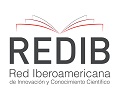Documentary film production in the ‘60s and ‘70s in Santa Fe: dialogues and counterpoints with Latin American and European artistic tendencies
diálogos y contrapuntos con tendencias artísticas latinoamericanas y europeas
DOI:
https://doi.org/10.14409/culturas.v0i12.7805Keywords:
documentary, politics, artAbstract
If we follow the lines of Badiou (2005) we can say that a philosophical view of the twentieth century would not worry so much about knowing what happened, but would focus on investigating what the thinking was at the time. Analyzing cultural expressions can give us indications of that subjectivity as well as the historical context of production. This work aims to approach the cultural production of the ‘60s and’ 70s in Argentina, without ignoring its dialogues and counterpoints with Latin American and European artistic trends. We will focus on the cinematographic production of the time and will analyze, in particular, a selection of documentary films made in the ‘60s and’ 70s in the framework of the Documentary School of Santa Fethat belongs to the Institute of Cinematography of the Universidad Nacional del Litoral. In the first part, the conceptualizations of culture are discussed to define a positioning that allows us to investigate the relations between art and politics in the ‘60s and ‘70s. In the second section, we discuss the tensions and dialogues between regionalism and internationalism present in the artistic expressions of Latin America in those years and in particular in the new Latin American cinema. Thirdly, this paper analyzes how the trend of new Latin American cinema is evident in a corpus of productions from the Documentary School of Santa Fe (Argentina, 1956–1976) in order to investigate the imbrications between art and politics in the 60s 70s at the regional level (Litoral). In the fourth section the aesthetic options and rhetorical strategies used in the documentary corpus are explored and some elements are offered to debate notions such as political cinema and militant cinema. In the last section wediscuss the question whether it is possible to speak of an update of the cinematographic languages and the contemporary European aesthetics, without falling into the idea of subordination to foreign influences.






